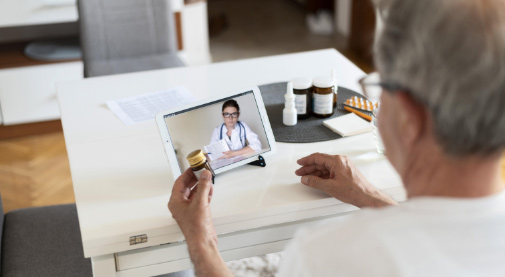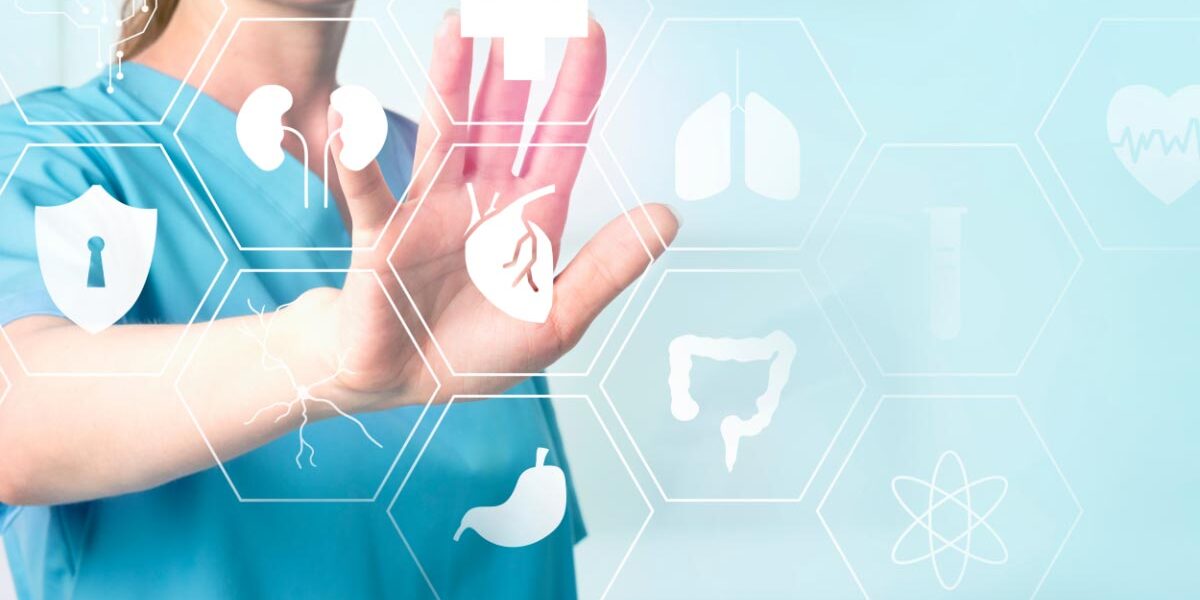What is IoT?
The Internet of Things (IoT) is a collection of connected gadgets. These gadgets are linked and can exchange data. Furthermore, this does not simply apply to cellphones and computers. The premise behind the Internet of Things is that any object, such as cars, kitchen appliances, lighting control systems, air conditioning, and so on, can join the network and communicate with one another once linked. The information gathered can subsequently be used to carry out tasks.
What can IoT do for healthcare?
The Internet of Things has already made its way into the medical field. You’ll be able to see it firsthand in some cutting-edge hospitals. Connected inhalers and insulin pens, as well as ingestible sensors, are other examples. Devices can communicate with one another, exchanging information and triggering actions. This permits medical experts to respond more quickly. Doctors can also provide remote and round-the-clock medical help thanks to IoT Solutions. As a result, patient care is improved. The lives saved in this scenario are due to technological growth and creativity.
On the other side, the Internet of Things (IoT) can make healthcare more affordable and efficient in the future. It can aid in the development of more personalized and patient-centered devices. Moreover, IoT will also enable patients to get better access to data, personalized care; thus, leading to fewer visits to the hospital.
Why is IoT the future of healthcare?
Medical facilities and equipment should be cleaned and disinfected more frequently.
Companies like TMiRob, UVD, and Xenex Disinfection Services have created self-driving internet-controlled robots that sterilize and disinfect surfaces in hospitals and healthcare centers to protect the health of medical employees. They can be controlled remotely and emit UV rays to kill viruses and other diseases. They are sold in Japan, but they are also used in China, Italy, and the United States.
Remote patient monitoring and diagnostics are possible using medical trackers.
For patients who cannot leave their homes, fitness trackers and more specialized medical trackers can monitor vital signs and remotely communicate data to healthcare specialists. Designers of wearables should think about how PCB thickness affects comfort and overall functionality.
Smartwatches such as Apple Watches and Fitbits, for example, can provide data on baseline heart rates. A Stanford University study hopes to develop a new algorithm that can detect strange patterns in heart rate data and alert patients when their bodies are in the process of recovery.
A similar investigation is being conducted by Scripps Research. They hope to aid public health responders, and individuals in recognizing when they are suffering from a viral respiratory disease, such as COVID-19 or the flu. While additional study is needed to improve detection, this could help to improve diagnostic methods in the future.
Telemedicine makes healthcare more accessible.

Many people are unable or unwilling to visit hospitals and obtain the care they require due to social distancing techniques. Telemedicine is becoming in popularity to limit the transmission of diseases by allowing for the delivery of health care services from a distance.
An AI-powered online doctor consultation tool in India has experienced a weekly growth of 25% in online users. Telemedicine firms attempt to make healthcare more accessible to minorities through various agreements with hospitals and healthcare centers while also limiting the exposure of healthcare staff to harmful diseases and infections.
Smart medicines have the potential to improve therapy and care.
The emergence of “smart tablets,” which contain microscopic sensors that send patient data once taken and lodge themselves in the stomach lining, is a significant advancement in medical therapy. Proteus Discover’s smart pill can be used in studies to determine how effective therapies are in general. Patients often hard to stick to a schedule for specific disorders like cancer, depression, and schizophrenia; thus, they enable doctors to identify when patients have taken their medicine. It also maintains track of their exercise levels so that doctors can offer more informed health recommendations.
The public is catching on to how easy internet channels are for medical and retail use, thanks to the growing number of smartphone users globally and the launch of 5G. In addition, safeguards for healthcare workers, such as remotely operated sanitizing devices, are more likely to be implemented in the future. Finally, with the prevalence of respiratory disorders like COVID-19, medical trackers and fitness devices are critical for early detection and treatment.
Specific future uses of IoT in Healthcare.
Remote Monitoring
Customized software and gadgets will scan data from patients’ medical cards in real-time, allowing doctors to assess a patient’s health better.
Wearables
These devices can track the patients’ daily activities in real-time and store data from the market. These gadgets provide information on a patient’s physical activities. Patients’ information would be provided to the doctor promptly, which could assist in preventing emergencies.
Asset Monitoring
IoT Solutions can assist in providing functionalities and controllers to a variety of important hospital equipment. Because the equipment is critical during treatment, any defect in it might be fatal. The employees would be able to monitor their work by connecting these gadgets quickly. Device flaws can also be identified in real-time, lowering the likelihood of incorrect treatment.
Future Benefits of IoT in Healthcare
Better Monitoring and Reporting
In medical situations such as asthma attacks and heart failures, real-time supervision via IoT devices can save lives. The connected device can capture vital information about a patient’s health and send it to a doctor in real-time. According to a study conducted by the Centre for Connected Health Policy, remote monitoring reduces the readmission rate of patients by 50%.
End-to-End Connectivity
With the support of healthcare mobility solutions, IoT can automate the process of patient care. It improves healthcare delivery by enabling interoperability, machine-to-machine connection, data mobility, and information exchange. The gadgets’ various connectivity protocols enable hospital staff to detect early indicators of disease in patients.
Data Analysis
IoT devices can swiftly gather, report, and analyze large amounts of data, reducing storage requirements. This will enable healthcare providers to concentrate on the information needed to treat the patient. The doctors’ decision-making process will be sped up thanks to data-driven insights.
Alerts and Tracking
In the event of a life-threatening situation, timely alerts can be critical. Medical devices can collect vital data and transmit it to doctors in real-time, thanks to the Internet of Things. Regardless of place or time, the reports provide an accurate assessment of the patient’s status.
Lower Costs
Patients will be able to communicate with doctors from the comfort of their own homes thanks to connected devices and wearables. Regular visits for various testing and checkups will be reduced. Patients will save money and time as a result of this.
Medication Management
Medication regimes will be easier to track with the help of smart wireless pill bottles. People who fail to take their meds on time can benefit from this. Doctors will use the analytics provided by IoT-enabled medication management processes to deliver better care to their patients.
Wrapping up
Taken together, these reasons explain how profoundly healthcare is estimated universal sensors and connectivity that are narrowing in size, and that assists in making sense of raising data sets. Now, these capabilities are merging in the IoT Solutions, connecting data, people, and technology for better healthcare.




After reading your article, it reminded me of some things about gate io that I studied before. The content is similar to yours, but your thinking is very special, which gave me a different idea. Thank you. But I still have some questions I want to ask you, I will always pay attention. Thanks.